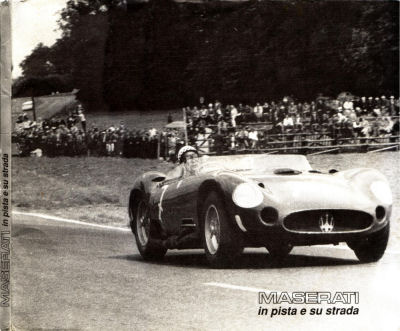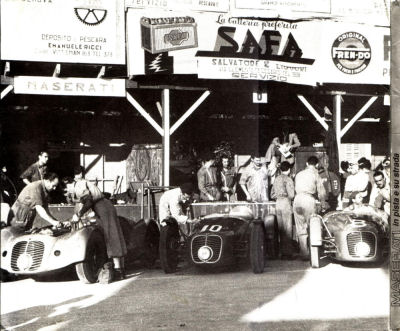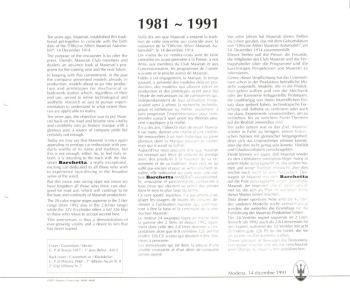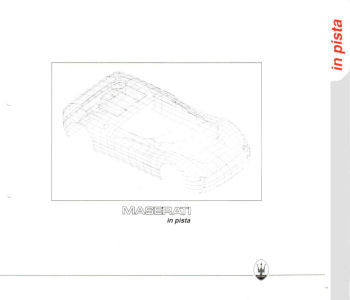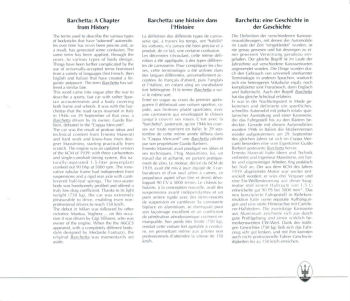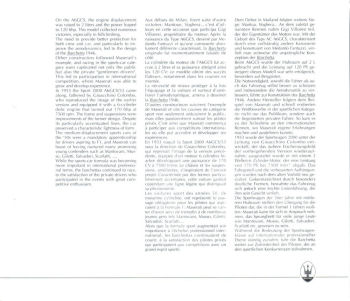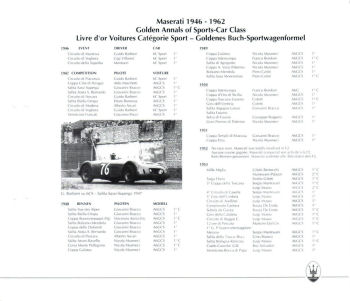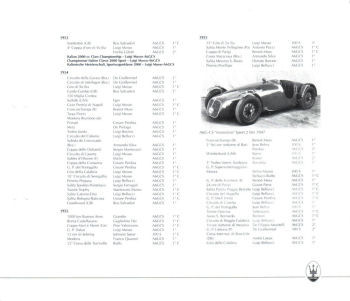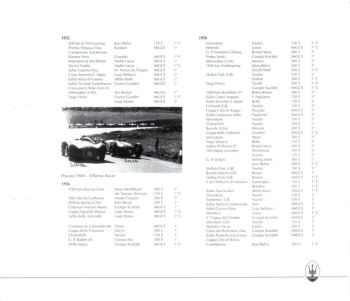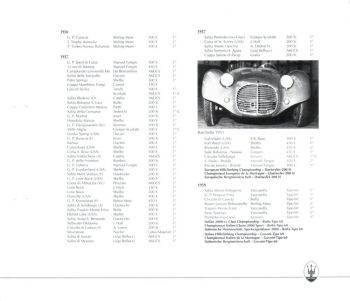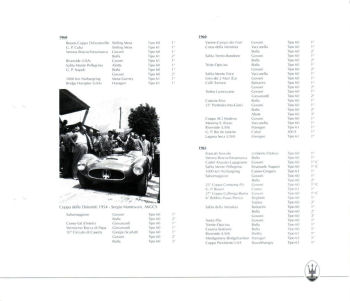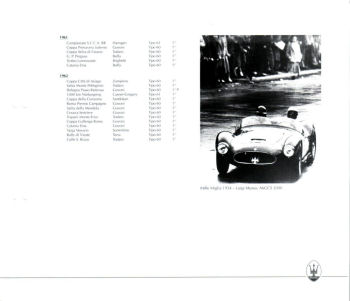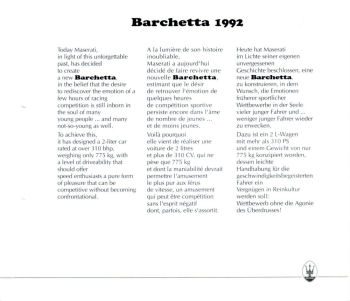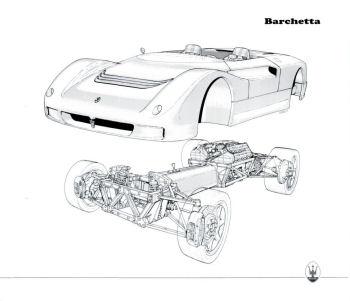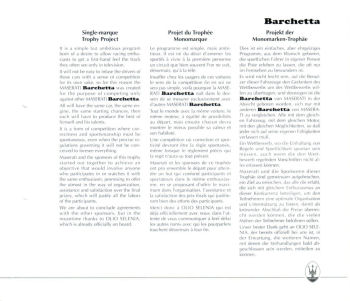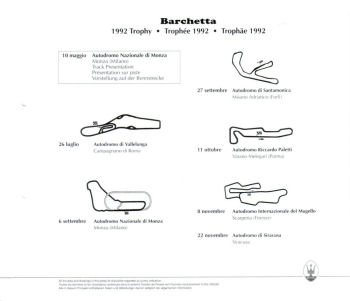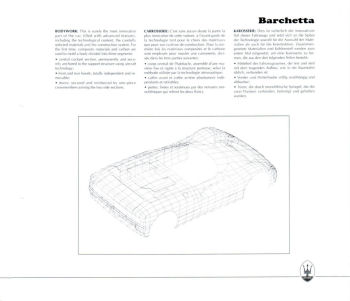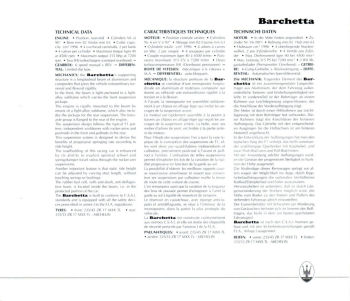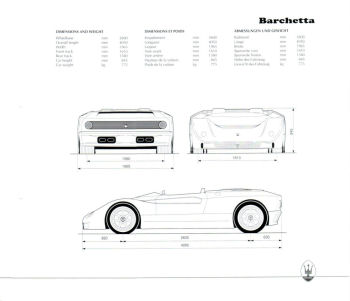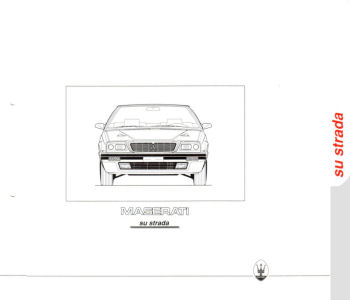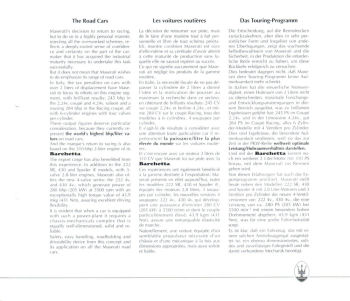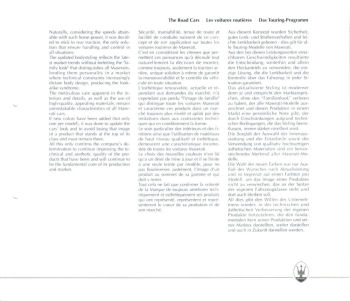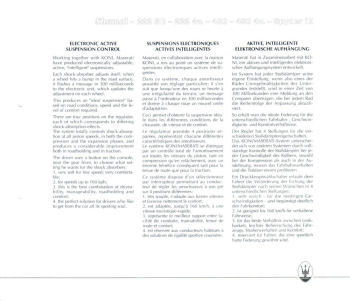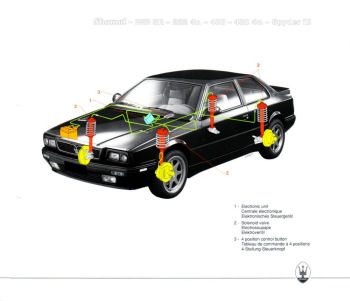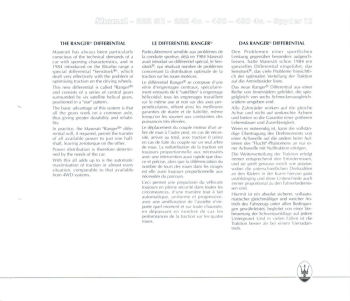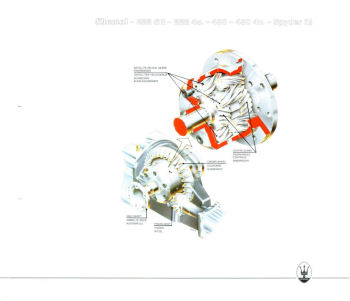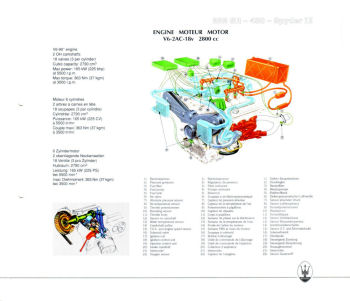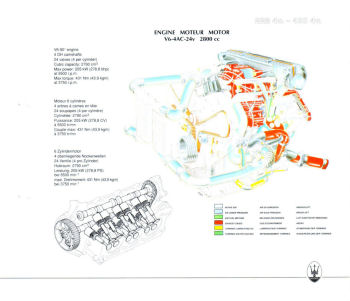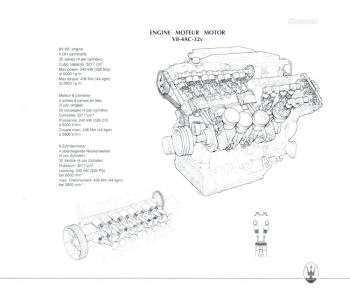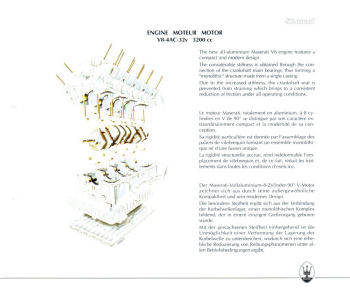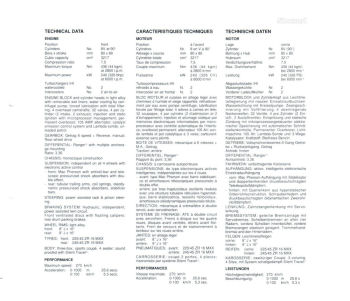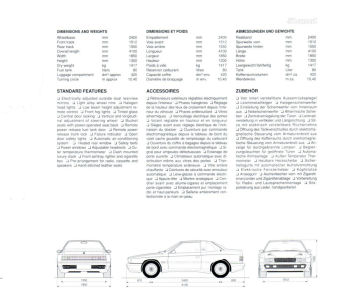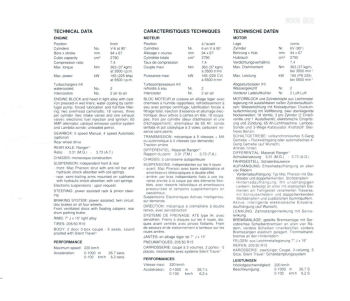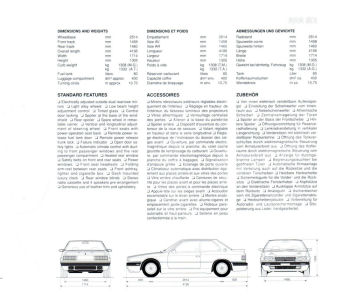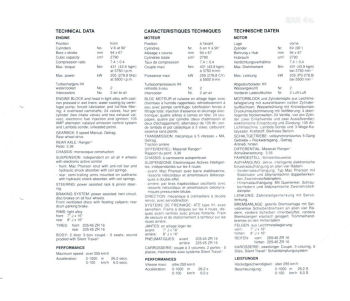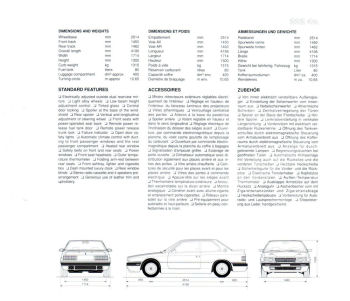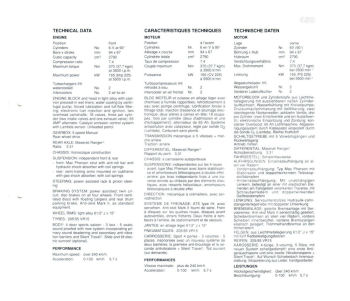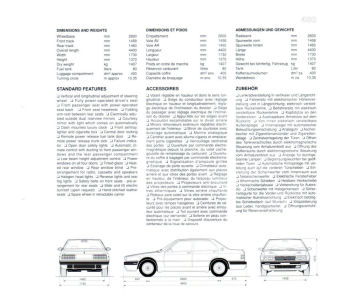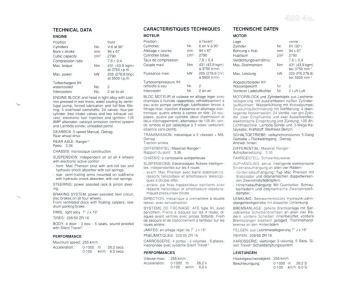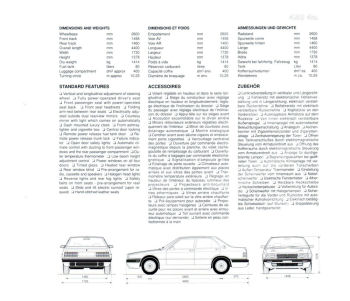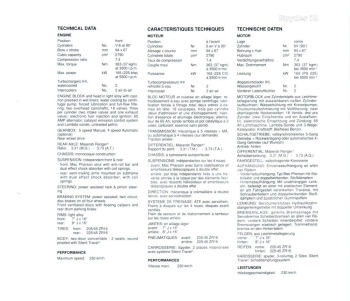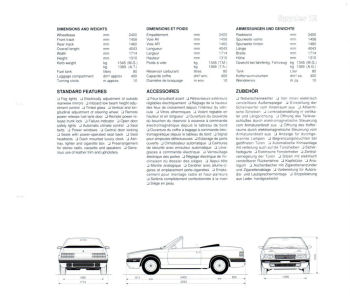 | |||
My sincere thanks to George and Enzo Piazza of Berlina Body Works for allowing me to publish the photos of the restoration of their Maserati Barchetta. |
||
BARCHETTA 1991 When Alessandro DeTomaso launched the Biturbo back in 1981, Maserati established a traditional get-together to coincide with the birth date of the "Officine Alfieri Maserati Automobili": 14 December 1914. |
|||
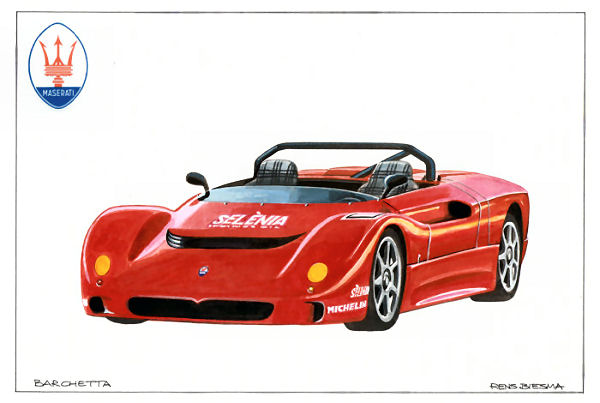 The Rens Biesma illustration of the Maserati Barchetta from the Dr. George Lipperts Collection |
|||
|
|
||
MASERATI BARCHETTA #THB CMS*LLH* |
||
|
"Dearest Enrico, 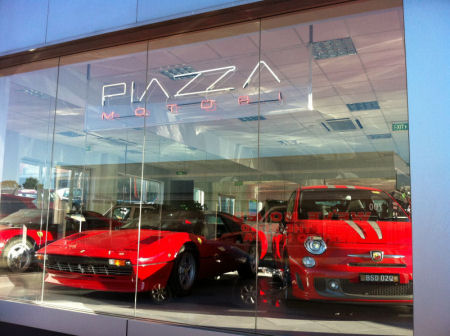 The PIAZZA MOTORI showroom in Leichhardt, New South Wales! Please have a look through and see if you have enough information to create a story on your fantastic website ! 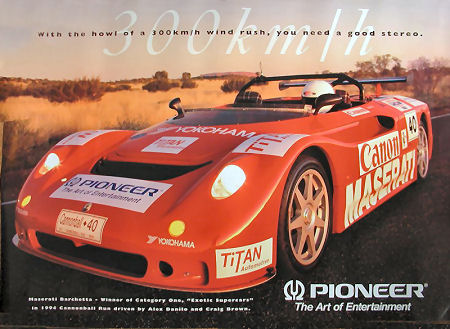 Maserati Barchetta - Winner of Category One, "Exotic Supercar", in 1994 Cannonball Run driven by Alex Danilo and Craig Brown. After this the Barchetta was a special guest at the opening of the Albert Park Grand prix circuit, where it performed a few parade laps. |
||
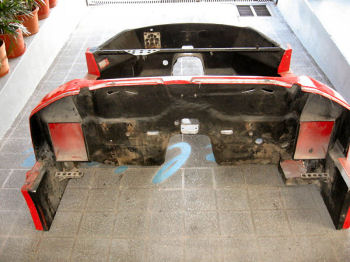 |
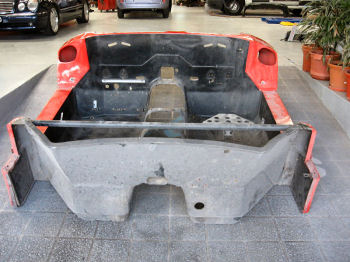 |
|
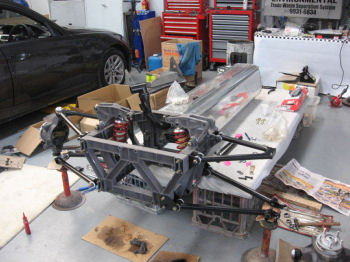 |
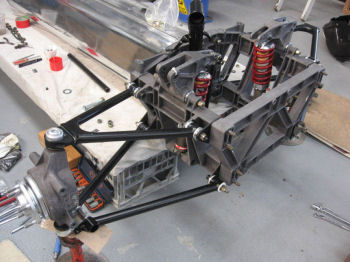 |
|
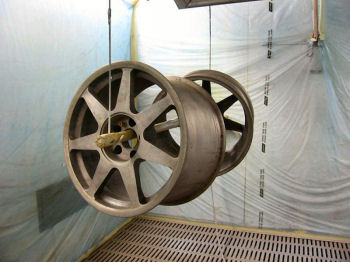 |
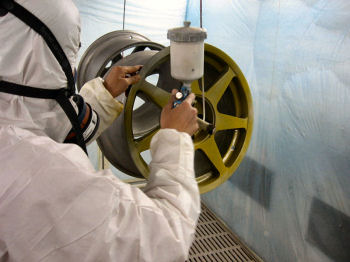 |
|
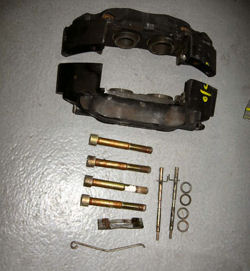 |
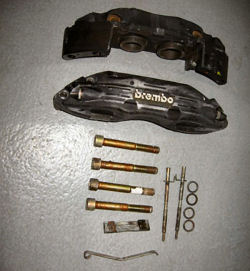 |
|
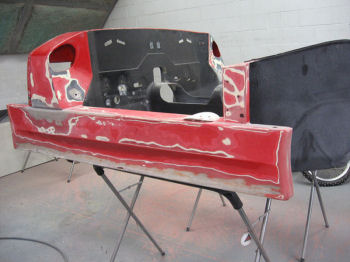 |
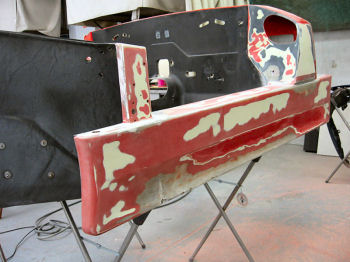 |
|
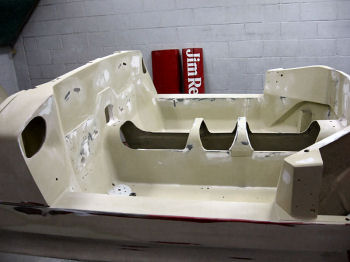 |
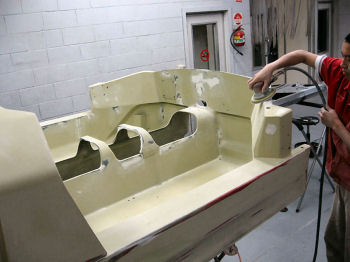 |
|
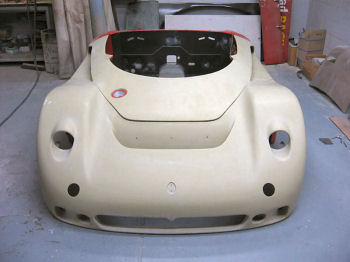 |
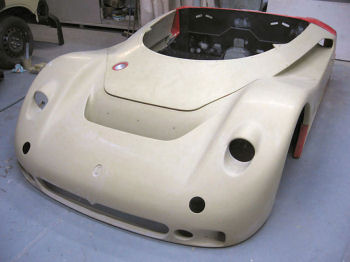 |
|
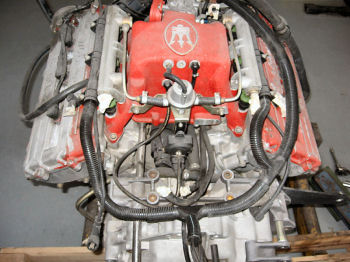 |
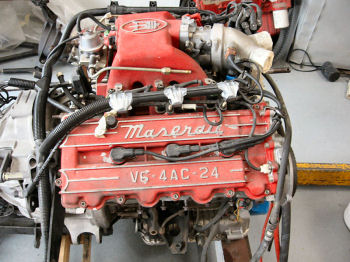 |
|
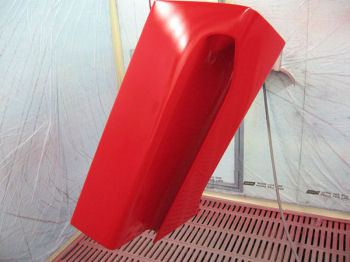 |
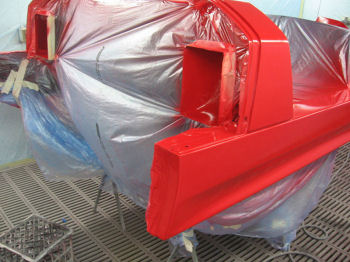 |
|
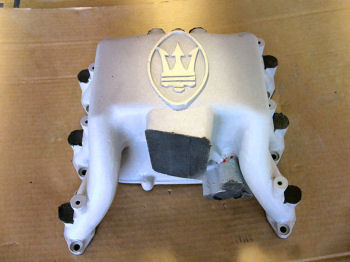 |
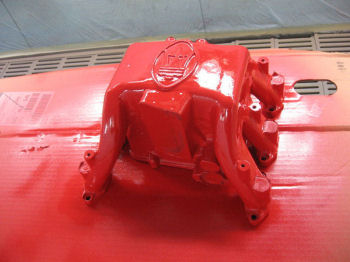 |
|
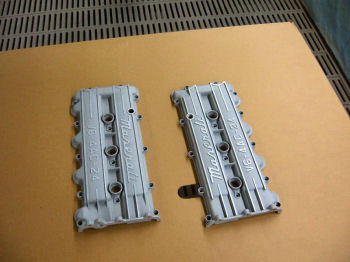 |
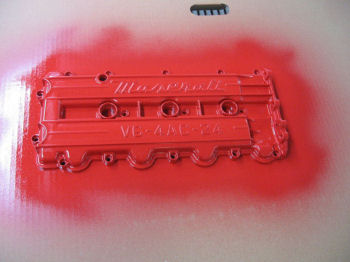 |
|
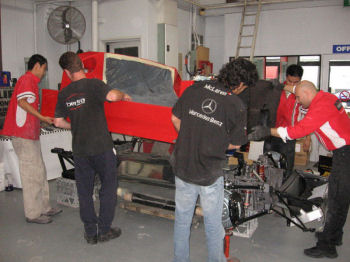 |
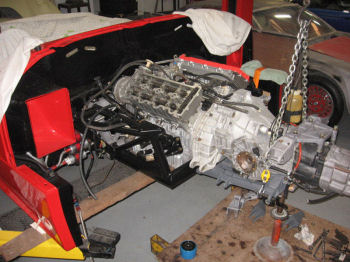 |
|
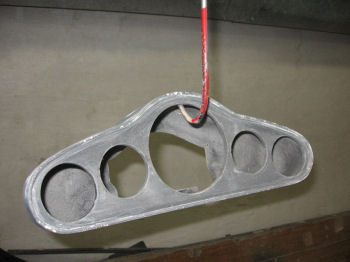 |
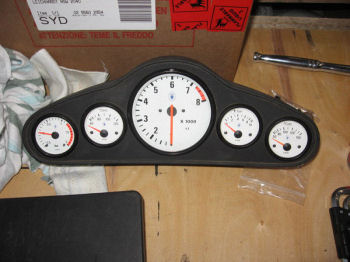 |
|
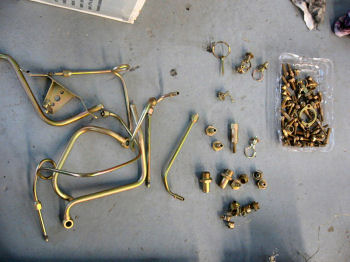 |
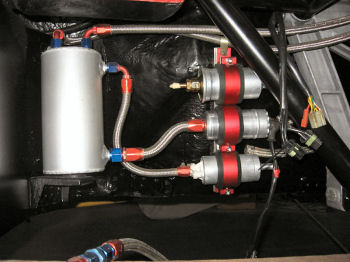 |
|
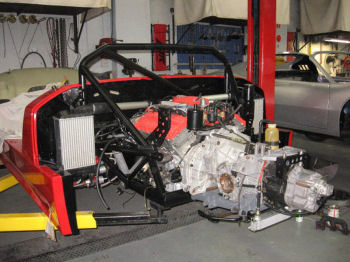 |
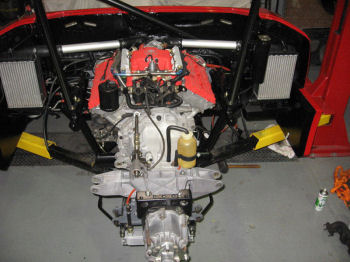 |
|
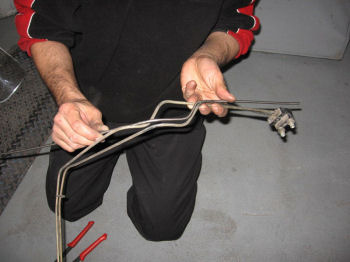 |
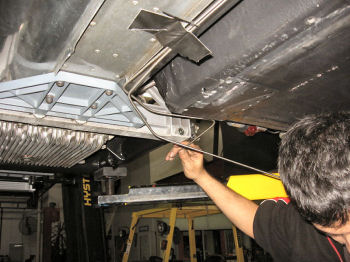 |
|
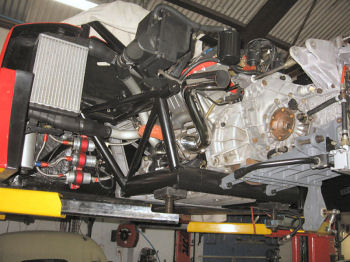 |
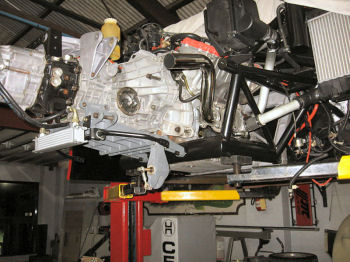 |
|
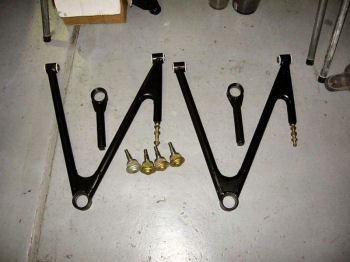 |
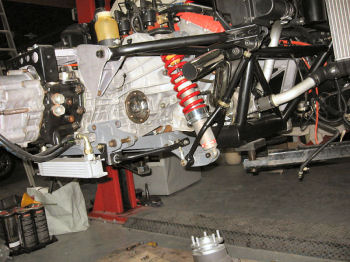 |
|
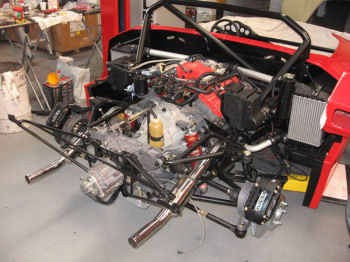 |
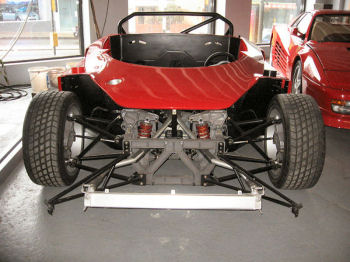 |
|
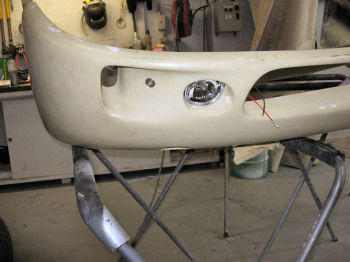 |
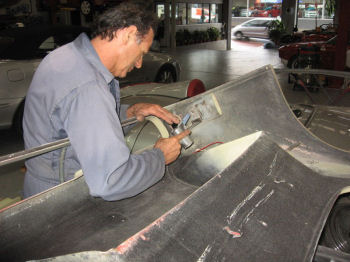 |
|
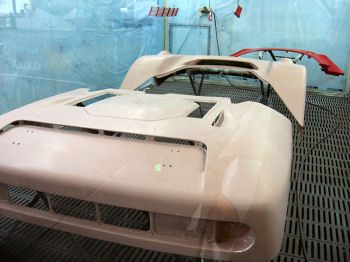 |
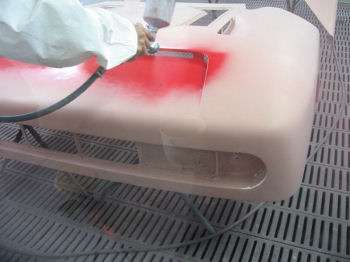 |
|
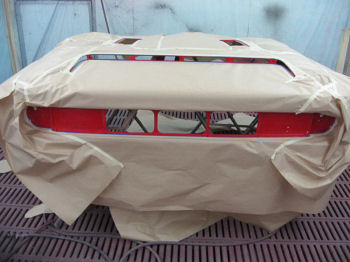 |
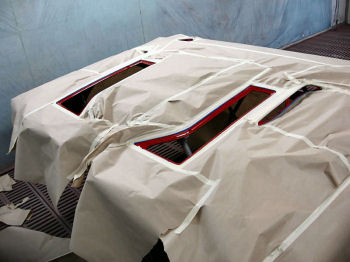 |
|
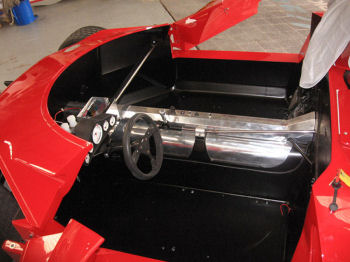 |
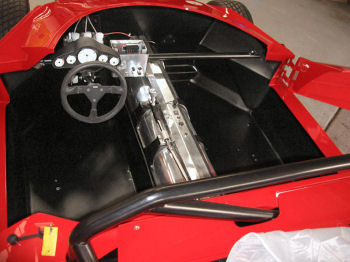 |
|
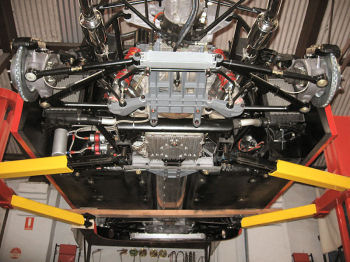 |
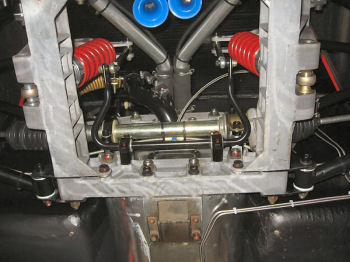 |
|
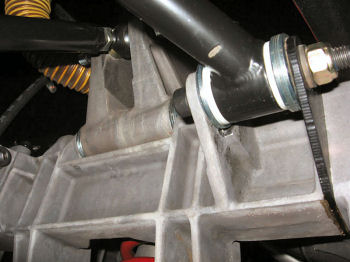 |
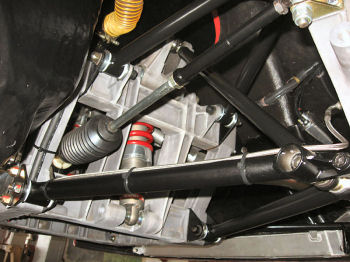 |
|
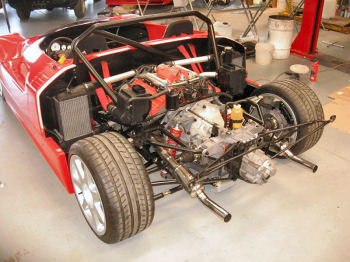 |
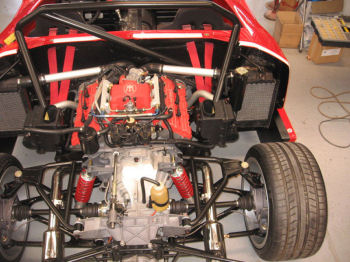 |
|
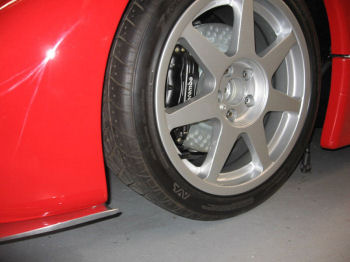 |
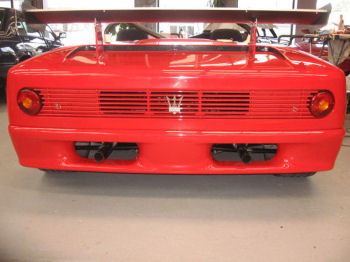 |
|
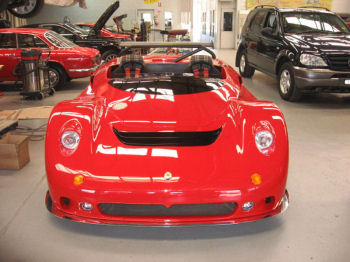 |
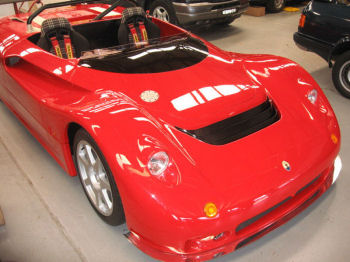 |
|
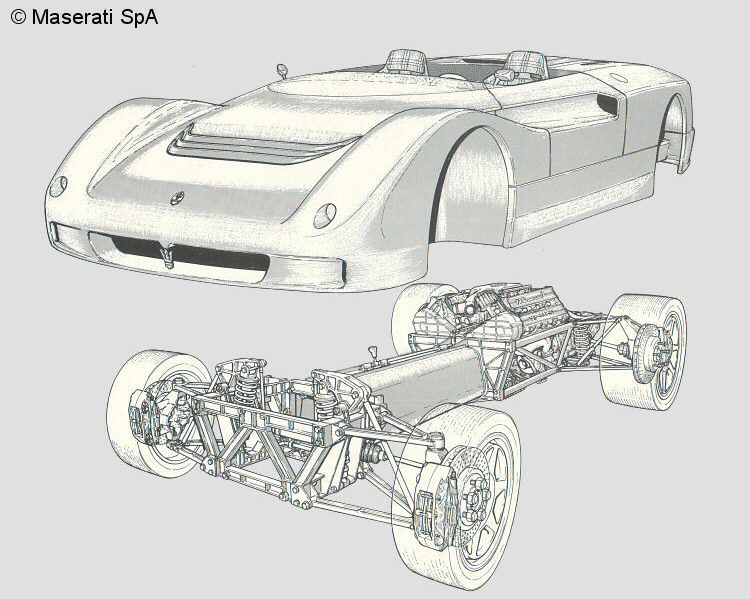 |
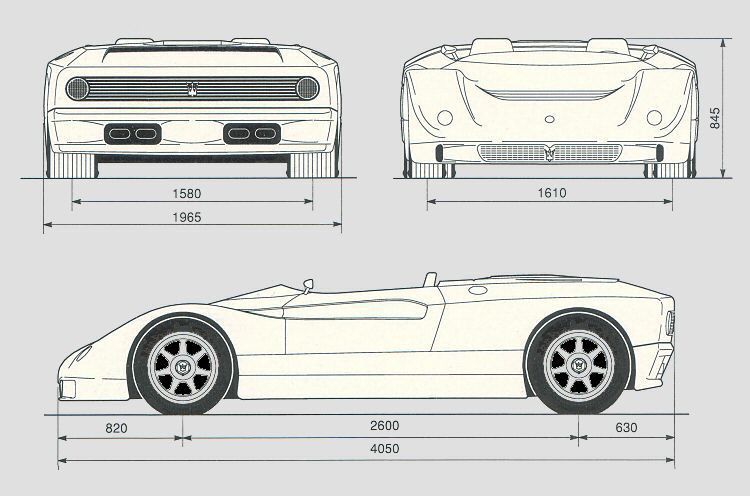 |
| TECHNICAL DATA - MASERATI BARCHETTA | |||
CHASSIS The Barchetta's supporting structure is a longitudinal beam of aluminium honeycomb, carbon fibre and fibreglass In the front, the beam is tight-anchored to a light-alloy subframe which carries the front suspension pickups. The engine is rigidly mounted to the beam by means of a light-alloy subframe, which also includes the pickups for The suspension design follows the typical Fl pattern: independent wishbones with rocker-arms and pushrods in the This suspension system is designed to derive the benefits of progressive springing rate according to ride height. The roadholding of this racing car is enhanced by its ability to exploit optimal wheel and spring/damper travel Another important feature is that static ride height can be adjusted by varying strut length, without touching springs The rubber fuel cell, with anti-slosh, anti-deflagration foam, is located inside the beam, i.e. in the protected portion The Barchetta is built to conform to CSAI standards and is equipped with all the safety devices prescribed in annex This is surely the most innovative part of the car, filled with advanced features, including the technological content, For the first time, composite materials and carbon are used to mould a body divided into three segments: Central cockpit section, permanently and securely anchored to the support structure using aircraft technology; Front and rear hoods, totally independent and removable; Doors, secured and reinforced by one-piece crossmembers joining the two side sections. |
|||
| Body type | 2-seater barchetta-style sports racer |
| Production years | From 1991 to 1992 |
| Engine | Rear-mid engined V6 cylinder at 90° |
| Bore and stroke | 82 mm X 63 mm |
| Engine capacity | 1996 cc |
| Compression ratio | 7.8:1 |
| Maximum power | 315 bhp @ 7200 rpm |
| Distribution | Four overhead camshafts, four valves per cylinder |
| Induction system | Weber electronic injection, two water-cooled IHI turbochargers with permanent overboost and two air-to-air intercoolers |
| Ignition | Weber electronic ignition |
| Cooling system | Water-cooled, centrifugal pump |
| Transmission | Rear wheel drive |
| Differential | Limited slip type |
| Gearbox | ZF six-speed transaxle |
| Front suspension | Wide angle double wishbones all round, with inboard coil over shock absorbers |
| Rear suspension | Wide angle double wishbones all round, with inboard coil over shock absorbers |
| Brakes | Dual circuit non-servo brakes with balance bar - four-pot calipers clamping vented discs |
| Length | 4050 mm |
| Width | 1965 mm |
| Heigth | 845 mm |
| Wheelbase | 2600 mm |
| Wheel tracks | Front 1610 mm Rear 1580 mm |
| Tyres | Front:- 245/40 ZR x 18 Rear:- 285/35 ZR x 18 |
| Dry weight | 775 kg |
| Maximum speed | Over 300 kph (186 mph) |
| Barchetta Corsa and Stradale Brochures | ||
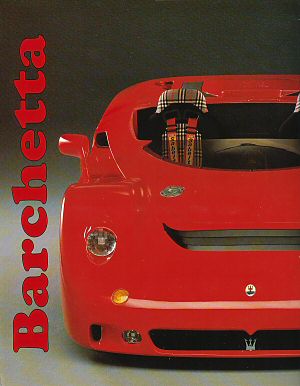 |
 |
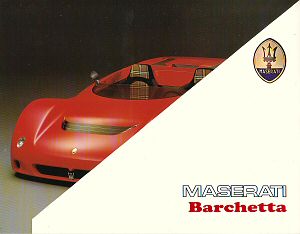 Barchetta Corsa brochures |
 |
||
|
To enter Enrico's Maserati Pages CLICK HERE! Copyright: Enrico's Maserati Pages - © 2012. All rights reserved. |
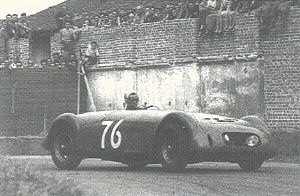 The terms used to describe the various types of bodystyles that have "adorned" automobiles over time has never been precise and, as a result, has generated some confusion. The same term has been applied, through the years, to various types of body design. Things have been further complicated by the use of universally accepted terms borrowed from a variety of languages (first French, then English and Italian) that have created a linguistic potpourri. The term Barchetta has suffered a similar fate.
The terms used to describe the various types of bodystyles that have "adorned" automobiles over time has never been precise and, as a result, has generated some confusion. The same term has been applied, through the years, to various types of body design. Things have been further complicated by the use of universally accepted terms borrowed from a variety of languages (first French, then English and Italian) that have created a linguistic potpourri. The term Barchetta has suffered a similar fate.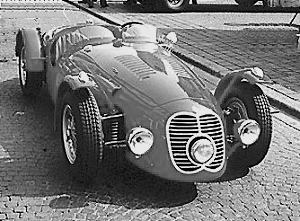 The car was the result of profuse ideas and technical content from Ernesto Maserati and hard work and know-how from designer Massimino, starting practically from scratch. The engine was an updated version of the 6CM of 1939: with three carburettors
and single camshaft timing system, this naturally aspirated 1.5-litre powerplant cranked out 90 bhp at 5000 rpm. The innovative tubular frame had independent front suspensions and a rigid rear axle with cantilevered half-leaf springs. The two-seater body was handsomely profiled and offered a truly low drag coefficient. Thanks to its light weight (750 kg), the
car was extremely pleasurable to drive, enabling even non-professional drivers to reach 150 kph.
The car was the result of profuse ideas and technical content from Ernesto Maserati and hard work and know-how from designer Massimino, starting practically from scratch. The engine was an updated version of the 6CM of 1939: with three carburettors
and single camshaft timing system, this naturally aspirated 1.5-litre powerplant cranked out 90 bhp at 5000 rpm. The innovative tubular frame had independent front suspensions and a rigid rear axle with cantilevered half-leaf springs. The two-seater body was handsomely profiled and offered a truly low drag coefficient. Thanks to its light weight (750 kg), the
car was extremely pleasurable to drive, enabling even non-professional drivers to reach 150 kph.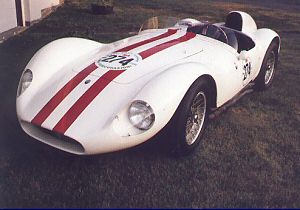
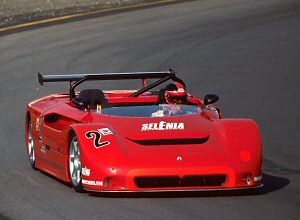 Back then, the objective was to put Maserati back on the road and breathe new vitality and credibility into an historic marque with a glorious past: a source of company pride but certainly not enough.
Back then, the objective was to put Maserati back on the road and breathe new vitality and credibility into an historic marque with a glorious past: a source of company pride but certainly not enough.